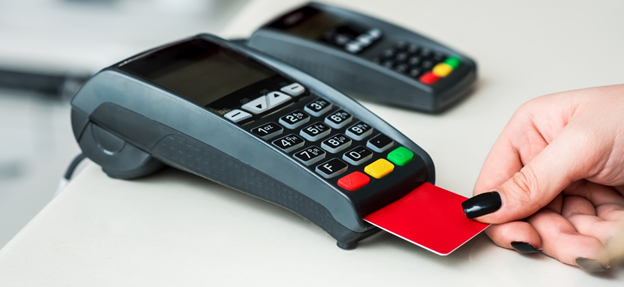Definition
Related Definitions
Zero-Floor Limit
Zero-Floor Limit
What is zero-floor limit?
Zero-floor limit means that all transactions processed must get authorisation when being processed at a store. Authorisation is for credit and debit card transactions. The floor limit is a pre-specified limit on transactions. All transactions below the prefixed floor limit do not need any approval from the cardholder. These are automatically processed by merchants instantly. The concept of having a zero-floor limit has become increasingly common due to the speedy implementation of digital payment processing systems. Zero-floor limit helps protect cardholders and issuing companies against frauds, especially those involving small purchases, which collectively turn out as impactful.
Summary
- A zero-floor limit on a credit or debit card essentially means all transactions would need authorisation.
- The zero-floor limit has become the digital payment processing world of today.
- Zero-floor limits help protect against fraudulent transactions, particularly about relatively small purchases.
Frequently Asked Questions (FAQ)-
How does zero-floor limit work?
Before the advent of a zero-floor policy, merchants who needed authorisation on a transaction would have to take a physical imprint of the customer's credit card. The entire transaction process would, thus, inevitably slow down. From there evolved the concept of imposing floor limits or a minimum threshold size below which transactions would not need authorisation. The zero-floor policy thus helps merchants and customers alike. As a result, both can benefit from the fast pace and improved fraud protection.
Though merchants have some discretionary power to decide on their floor limit, card issuing companies may also set up their own rules. Now, if it is done, the merchants would then be obliged to follow. If a merchant allows transactions that do not adhere to the credit card company's assigned floor limits, that merchant may be penalised or charged a credit card company fee.
Having a zero-floor limit is a very popular policy. The advanced computerised systems can now responsibly process payments because of the inherent advantage of a zero-floor limit policy. The transactions can be authorised within a matter of seconds. It essentially causes no difference in the speed needed to authorise a large or a small transaction. For this reason, almost all companies have adopted the policy of zero-floor limit in recent years.
Although zero-floor limits are becoming increasingly popular, card companies initially used these limits only when the power to access the customer's credit card was not with the merchant. Examples of such cases are online stores or mail-order companies like Amazon, Alibaba, etc. In such cases, known as "contactless transactions," it has long been customary to authorise all transactions regardless of their size to protect against the risk of purchases being made with stolen credit cards.

Image Source: © Jutaphoto | Megapixl.com
The zero-floor limit thus is extremely important for online merchants, who are growing in numbers these days. In the case of contactless transactions, the floor limit is essentially set to zero.
In cases where there is a zero-floor limit, the transactions require retail authorisation to verify the merchant's transaction against the credit or debit card's overdue balance. It means all transactions having even the smallest of value need client authorisation.
The transaction which does not adhere to the zero-floor limit is to be reversed or declined later. It may also attract additional charges as a penalty depending on the card-issuing company.
Example to better understand a zero-floor limit.
Richson, an entrepreneur, was once reviewing his credit card bill. He was going through the long list of transactions he usually has in a month. Suddenly, he shockingly realised a list of several small transactions at stores he had never visited. It had never happened before, and the sum of all those small transactions was noteworthy for Richson. He started searching for his card immediately, but to his surprise, it was safe with him. He soon started to believe that there was a potential misuse or information theft of his card. He immediately informed the card-issuing company about this.
Both the companies and Richson started to investigate the real cause. After investigating, it got confirmed that Richson's credit card information had been used by an unauthorised party to make online purchases. There was theft and misuse. The thief had smartly made purchases for relatively small amounts so that they are not easily detectable for the card owner. It also helped the thief make purchases skipping floor limit policies.
It was a case of fraud. Since Richson had complained, he got his reimbursements and was issued another card immediately. The card issuing company immediately blocked the stolen card. The new card issued to Richson was then issued with a zero-floor limit policy. Now, nobody could use the card for even the smallest amount of transactions without proper authorisation.
What are the benefits of zero-floor limit?

Source: © Rawpixelimages | Megapixl.com
- Zero-floor limits enable contactless or online transactions.
- The authorisation process improves the safety of the cardholder's funds.
- The possibility of fraudulent activities from a customers' lost credit card is eliminated.
- Credit card issuer companies prevent fraudulent and suspicious activities.
- Safe transactions and safe funds are ensured via zero-floor limits.
- It also improves the speed of transactions using a card.
What is the zero-floor limit fee?
The zero-floor limit fee applies to unauthorised or improper settlement transactions that users can't match. It is like a penalty fee on the cardholder by the issuer.
It is not very common to find a zero-floor limit fee charged. Additionally, if a cardholder holds it on a flat-rate pricing model, individual assessments are not seen on their statement. However, if charged, even if not visible, the cardholder must pay it to use his card in the future. Therefore, it is a check mechanism from the issuing company's side.
